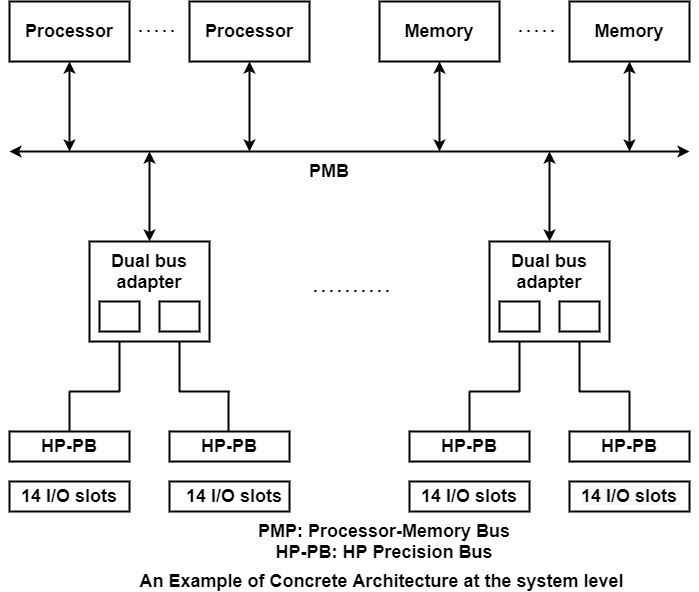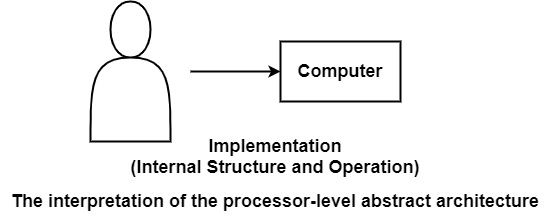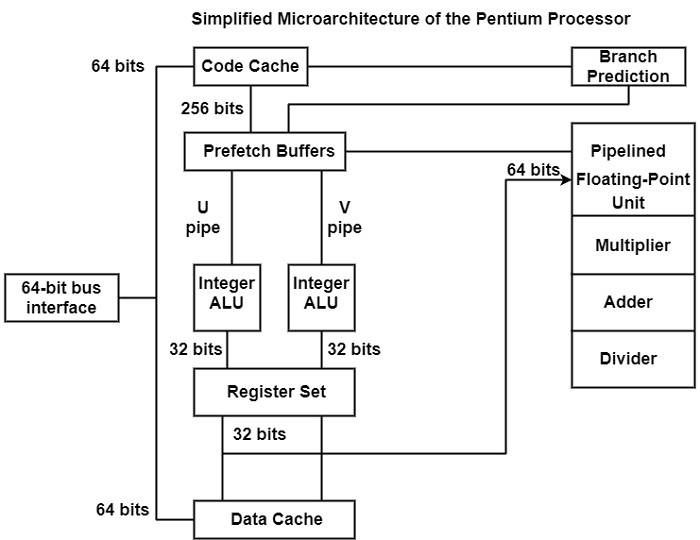
 Data Structure
Data Structure Networking
Networking RDBMS
RDBMS Operating System
Operating System Java
Java MS Excel
MS Excel iOS
iOS HTML
HTML CSS
CSS Android
Android Python
Python C Programming
C Programming C++
C++ C#
C# MongoDB
MongoDB MySQL
MySQL Javascript
Javascript PHP
PHPPhysics
Chemistry
Biology
Mathematics
English
Economics
Psychology
Social Studies
Fashion Studies
Legal Studies
- Selected Reading
- UPSC IAS Exams Notes
- Developer's Best Practices
- Questions and Answers
- Effective Resume Writing
- HR Interview Questions
- Computer Glossary
- Who is Who
What are different levels of abstraction in Computer Architecture?
There are three different layers of abstraction in computer system such as the concrete architecture at the system level, the abstract and concrete architecture at the processor level, and the abstract and concrete architecture at the micro-machine level. Let us discuss each level one by one.
Concrete Architecture of Computer Systems
At the system level, the representation of the concrete architecture depends on processor level building blocks, including processors, memories, buses, etc. Its representation contains the description of the building blocks, the interpretation among them, and the services of the entire system. The figure shows an example of the system-level architecture of the HP 9000 Corporate Business Servers.

Abstract Architecture of Processor
The abstract architecture of a processor is defined as clearly the architecture of the processor. It follows the black-box representation of a processor, as displayed in the figure.

The black-box representation can be treated from either the programmer’s or the hardware designer’s point of view. Therefore, when talking about the processor-level abstract architecture, we are treated with either the programming model or the hardware structure of a specific processor.
The programming model is similar to the representation of the machine language. The initial definition changes out to be the abstract architecture of the processor, when treated from the programmer’s point of view, considering the Von-Neumann model of the computation.
The programming model which is provided by the machine language represented at two multiple privilege levels such as the user level and the system level. Instructions such as I/O instructions and some other status manipulation instructions are only available at the system level.
Concrete Architecture of Processors (Microarchitecture)
The concrete architecture of a processor is defined as microarchitecture. The microarchitecture of processors is generally provided as a logic design. This data is represented using a block diagram, through the definition of a collection of functional units (including register blocks, buses, execution units, etc.) and their interconnections, and by maintaining the operation of the entire processor.
The figure shows an example of the simplified microarchitecture of the Pentium processor.

The microarchitecture as a physical design is generally described in technical notation, which is in most cases proprietary data.

